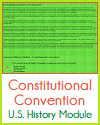| First Prize Ribbon Sign PDF Printable |
|---|
| www.studenthandouts.com ↣ Classroom Organization ↣ Classroom Signs |
 |
    |
|
First Prize Ribbon Sign - Free to print (PDF file). Click here to print.
Ribbons are often given out as prizes or awards for various reasons, and they have become a symbol of recognition and achievement in many contexts. Here are several reasons why ribbons are used as prizes. Visual Symbol: Ribbons are visually appealing and can serve as a tangible symbol of accomplishment. Their bright colors and distinctive design make them stand out and catch the eye. Versatility: Ribbons are versatile and can be easily customized to suit different occasions and events. They can be made in various colors, sizes, and materials, allowing for personalization. Affordability: Ribbons are relatively inexpensive to produce, making them a cost-effective choice for awards and prizes, especially in settings where many prizes are needed, such as school competitions or sporting events. Tradition: The practice of awarding ribbons has a long history, dating back to ancient times. Ribbons were originally used to honor military achievements and have since been adapted for a wide range of purposes. Recognition: Ribbons provide a tangible form of recognition and appreciation for an individual's efforts, skills, or achievements. They serve as a way to acknowledge and celebrate success. Motivation: Ribbons can serve as motivators. The prospect of earning a ribbon can encourage participants to strive for excellence and put in their best effort. Commemoration: Ribbons are often used to commemorate special events, anniversaries, or milestones. They serve as a keepsake or memento of the occasion. Competition: In competitive settings, such as sports or academic competitions, ribbons are awarded to winners and participants to differentiate their levels of achievement. This helps recognize different levels of skill and effort. Inclusivity: Ribbons can be awarded to a broad range of participants, not just the overall winners. This inclusivity ensures that many individuals receive recognition for their participation and contributions. Encouragement: Ribbons can be used to encourage participation and involvement in activities. They can be given to newcomers or those making progress, promoting a positive and welcoming atmosphere. Promotion: Ribbons can promote specific causes, events, or organizations. They can display logos, slogans, or messages, helping raise awareness and support. Community and School Events: Ribbons are commonly used in community and school events like fairs, festivals, and science fairs. They add a festive and competitive element to these gatherings. Aesthetic Appeal: Ribbons are often chosen for their aesthetic appeal. They can enhance the overall presentation of an award or prize, making it more visually appealing. Appreciation: Giving ribbons as prizes is a way to show appreciation for the efforts and contributions of individuals. It conveys gratitude and recognition for their dedication. Sense of Achievement: Receiving a ribbon, regardless of its size or color, can instill a sense of achievement and pride in the recipient, boosting their self-esteem and confidence. In summary, ribbons are given out as prizes because they are visually appealing, versatile, affordable, and have a long tradition of symbolizing recognition and achievement. They serve as tangible tokens of appreciation, motivation, and celebration in various settings and contexts. |
| www.studenthandouts.com ↣ Classroom Organization ↣ Classroom Signs |








